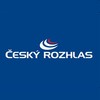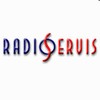Sol y Sombra (Slunce a stín, 2017)
Maria Gnann a Thilo Braun.
Nastudoval SWR v roce 2017. Premiéra 26. 10. 2017 (SWR).
Lit.: anonym: Psychedelische Nachtwanderung. In web Terzwerk, 26.10.2017 (anotace). – Cit.: Willkommen im Zauberwald! Bäume glimmen im Dunkeln, skurrile Klänge wabern durch den Schlosspark. Werner Cee will die Besucher seiner Klanginstallation “Sol y Sombra” in den Summer of Love katapultieren. Maria Gnann und Thilo Braun auf nächtlichem Trip.
Lit.: anonym: Werke des Jahres 2017 Sol y Sombra. Werner Cee. Kompositionsauftrag des SWR. In Zusammenarbeit mit SWR2 Hörspiel. In web SWR, 29. 9. 2017 (článek). – Cit.: SWR Hörspiel und SWR2 Neue Musik haben 2017 eine Koproduktion für die Donaueschinger Musiktage verabredet, welche die Möglichkeiten einer kreativen Überschneidung von Hörspiel und Klangkunst ausloten soll.
Motiv von Hörspiel wie auch Installation ist der „Summer of Love“ 1967 – vor fünfzig Jahren. Damals strömten Tausende von Jugendlichen aus den ganzen USA nach San Francisco, kultivierten im Viertel Haight Ashbury ihr neues Lebensgefühl. Es kam zu handfesten Protesten gegen den Vietnamkrieg; es stellten sich Fragen nach dem Wesen der Realität, der menschlichen Wahrnehmung, des Bewusstseins. Gleichzeitig mit der eigentlichen Hippie-Bewegung entstand die psychedelische Popkultur, die bis in die Jetztzeit hinein auch die Wirklichkeitsentwürfe aus dem Silicon Valley beeinflusst.
Hier in Deutschland trifft die Kunde vom kalifornischen „Summer of Love“ auf ein zerstörtes Land, auf eine traumatisierte Bevölkerung, die sich um Aufbau und Vergessen bemüht. Die wirtschaftliche Wiedergeburt wird zum „Wunder“. Weltgewandte Amerikaner prägen das Straßenbild, betrunkene GIs bevölkern mittelalterliche Burganlagen, das Dröhnen von Panzerkolonnen und Überschallknalle von Kampfflugzeugen sind so alltäglich wie das Wetter.
In Europa erzeugen veränderte Sichtweisen und gerade die kontrapunktische Dualität von Kriegstrauma und Suche nach Spiritualität ein kreatives Spannungsfeld, generieren eine Flut neuer Ausdrucksformen, die populäre Musik erschließt sich neue Klangwelten.
In roher Unbedarftheit transportiert die Psychedelic Music Avantgarde-Ästhetiken bis in die Hitparaden, experimentiert mit erweiterten Spieltechniken und Instrumentarien. Atonale Elemente, Noise und Acid Sounds, laute, brachiale Musik stehen neben lieblichen Flower-Power-Songs oder endlosen Lagerfeuer-Improvisationen. Zeitgenössische Musik ist auf der Straße angekommen, wie das LSD, das aus den Pharmalabors in Basel bis in die Parks von San Francisco gelangte.
Diese Hintergründe waren ausschlaggebend für die prozesshafte und multiperspektivische Entwicklung der Komposition:
Gemeinsames „Erinnern“ der historischen Situation und Studioimprovisationen mit den Musikern Eivind Aarset (e-git, electronics), Erland Dahlen (percussion/drums) und Werner Cee (e-chin, electronics) ergaben einen umfangreichen Fundus an Musikaufnahmen. Diese stellen das Grundmaterial der Komposition – Material, das im Sinne einer Musique concrète weiter transformiert wurde.
Auf narrativer Ebene kommen Textelemente hinzu: frei nach Peter Sinfield, Auszüge aus einem Strategiepapier der US-Armee zum Kampf gegen Zombies sowie die fast halluzinatorischen Naturbeschreibungen von J. A. Baker und Juna Robin. Auch Notizen des Basler Chemikers Albert Hofmann, der nach seiner Entdeckung des LSD zum Mystiker wurden, liegen der Installation und Komposition zugrunde. Die Texte werden von Neville Tranter interpretiert, der als Puppenspieler alle Facetten theatralischer Sprechkunst virtuos beherrscht. Weitere Mitwirkende sind Celia Bryce, Gesang, und die Bicycle Day Revisited Band.
Vielschichtigkeit und Widersprüchlichkeit ästhetisch/künstlerischer Positionen wie auch auf semantischer Ebene bleiben in der gesamten Komposition kontrapunktisch erhalten. Wie in einer technischen „Explosionszeichnung“ werden einzelne Motive und Aspekte aus dem frei assoziierten Zusammenspiel hervorgehoben, isoliert und schließlich in die domestizierte Landschaft des Stadtparks expandiert.
Die vielkanalige Lautsprecherinstallation schafft großflächig inszenierte akustische „Tableaus“: At Paranoia’s Door, Sol:67.17.,The Return of the Wanderer.
Diese Bilder strukturieren die Klang- und Lichtinstallation im Donaueschinger Park. Die Komposition reagiert mit der und auf die Natur, reicht von der Überhöhung ortsspezifischer Umgebungsgeräusche über kaleidoskopisch schillernde Metal Drones bis zu out-of-synch verlaufenden rhythmischen Momenten. Die Struktur von Anfang und Ende ist offen, ist Effekt der (inszenierten) Wanderung von Tableau zu Tableau. Je nach Ort, Position, Wetter, Tageszeit und Verweildauer ergeben sich immer wieder neue „Ansichten“, Mischungen, Interpretationsmöglichkeiten. Parallel zum ständig wechselnden Soundpanorama entfaltet sich mit Anbruch der Dunkelheit die Lichtinszenierung der drei Tableaus, eine Allegorie über Vision, Wirklichkeit, Wahn und Wunder. Eindeutigkeiten, klare Zuordnung und objektive Wahrnehmung, gar eine sinngebende Lösung, bleiben in der Inszenierung reine Utopie.
Das Hörstück (Ursendung am 26.10.2017) verdichtet Musik, semantische Klangereignisse und Texte mit Hilfe komplexer Montage- und Kompositionsstrukturen zu einer fortlaufenden Narration.
„When every man is torn apart with nightmares and with dreams…“
(Peter Sinfield)
This year, the SWR departments for radio plays and New Music arranged a co-production for the Donaueschingen Festival to explore the possibilities for a creative overlap between radio play and sound art.
The shared motif is the ‘Summer of Love’ 1967 – exactly 50 years ago. Thousands of young people from all over the USA flocked to San Francisco to cultivate in the Haight-Ashbury district a new approach to life. There were vigorous protests against the Vietnam War; at the same time, the participants wondered about the nature of reality, human perception and consciousness. Simultaneous to the Hippie movement itself, a psychedelic pop culture arose which influences Silicon Valley’s conceptions of reality to this day.
Here in Germany, the news of the Californian ‘Summer of Love’ reached a destroyed country, a traumatized population struggling to rebuild and forget. Economic rebirth became a ‘miracle’. The streets were filled with worldly Americans, drunken GIs peopled medieval fortresses, and the noise of tank columns and the sonic booms of fighter jets were as ordinary as the weather.
In Europe, changes of perspective, especially the contrapuntal duality of war trauma and the search for spirituality, produced a creative tension and generated a flood of new expressive forms, with popular music in particular exploring new sound worlds.
With its unfiltered, naïve approach, psychedelic music transported avant-garde aesthetics all the way into the charts, experimenting with extended techniques and different instrumentation. Atonal elements, loud and forceful music, noise and acid sounds went along with mellow Flower Power songs or endless campfire improvisation.
Contemporary music reached the streets, just like the LSD that found its way from the Swiss pharmaceutical labs to the parks of San Francisco.
This background was decisive for the processual and multi-perspectival development of the composition:
Joint ‘remembering’ of the historical situation and studio improvisations with the musicians Eivind Aarset (electric guitar, electronics), Erland Dahlen (drums/percussion) and Werner Cee (electric qin, electronics) yielded a substantial collection of recordings. They form the basic material of the composition – material that was further transformed in the sense of a musique concrète.
At the narrative level, these sounds are augmented by text elements: sections based loosely on Peter Sinfield; excerpts from a US Army strategy paper on fighting zombies; and the almost hallucinatory nature descriptions of J. A. Baker and Juna Robin. Further basic material is to be found in notes by the Basel chemist Albert Hofmann, who became a mystic after discovering LSD. The singer Celia Bryce and the Bicycle Revisited Band are additional performers.
The words will be interpreted by Neville Tranter, who, as a puppeteer, is a virtuoso of theatrical speaking in all its facets. A multi-layered and contradictory character, both in the aesthetic/artistic positions and on a semantic level, are maintained contrapuntally throughout the composition. As if in a technical ‘exploded diagram’, individual motifs and aspects are singled out from their freely-associated interplay, composed separately or isolated, and finally ‘returned to the wild’ in the domesticated landscape of the city park.
The four-channel loudspeaker installation stages large-scale acoustic ‘tableaus’: At Paranoia’s Door, Sol:67.17.,The Return of the Wanderer.
These images constitute the framework of the sound and light installation in the Donaueschingen Gardens. The composition responds to and with nature … ranging from an exaggeration of local environmental sounds to kaleidoscopic, out-of-synch rhythmical moments. The structure of beginning and end is undefined, it is a consequence of the (staged) walk from one tableau to the next. Depending on location, position, weather, time of day and length of stay, there is an endless variety of different ‘views’, new mixtures or possibilities for interpretation. Parallel to the constantly changing sound panorama, the particular light staging of the three tableaus – an allegory about vision, reality, delusion and miracle – unfolds with the nightfall. Unambiguities, clear assignments and objective perceptions – or even a solution that could provide some meaning – remain entirely utopian notions in this production.
The subsequent radio piece (first broadcast on Oct. 26, 2017) condenses the sound events and texts by means of complex mounting and compositional structure into continuous narration.
“When every man is torn apart with nightmares and with dreams …”
(Peter Sinfield)
If you enjoyed this post, please consider to leave a comment or subscribe to the feed and get future articles delivered to your feed reader.






Komentáře
Zatím nemáte žádné komentáře.
Napište komentář k článku